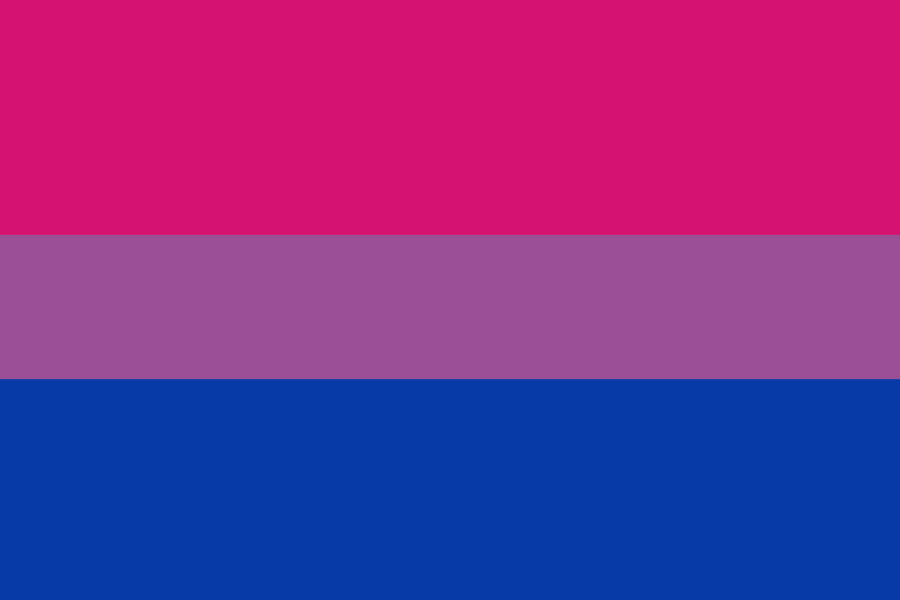By Madison Yardumian ’21
Sept. 26, Vol. XXIX, Issue 1
This Sept. 23 marked the 20th annual Celebrate Bi+ Visibility Day, a day meant to celebrate the rich history and community people who identify as being attracted to multiple genders. This includes people who identify as bi, pan, queer, fluid, or just straight up not monosexual. The use of bi+ is not meant to erase or collapse the various labels people choose to identify with. Rather, in this article I use it in the hopes of inviting people of various nonmonosexual identities to feel included in a history and community of which there is a great deal of shared history and common ground.
Celebrate Bi+ Visibility Day came into being at the International Lesbian and Gay Association Conference in Johannesnberg South Africa. Bisexual organizers Wendy Curry, Gigi Raven Wilbur, and Michael Page from the nonprofit BiNet USA hoped that the day would heighten visibility around bisexuality, which is so often erased or treated as a “stepping stone” to other sexualities, or a means of seeking attention. The month of September was selected because it aligned with Freddie Mercury’s birthday, a wink to Freddie Mercury’s powerful influence on the bisexual community.
As articles about biseuxality are apt to note, the B in LGBTQ+ accounts for half of the queer community, and is more often than not a silent majority. To me, celebrating bisexuality is about recognizing the specific hurdles bisexual people face, as well as celebrating the fluidity such an identity entails.
As the percentage of youth identifying as bisexual continues to grow, research surrounding bisexual youth is somewhat difficult to find. But what research has told us is distressing. The Trevor Project found that bisexual youth were at the highest risk for self suicide ideation, suicide attempts, and being victims of bullying and coercive sex as compared to their heterosexual, gay, and lesbian-identified peers. The Trevor Project site also notes that research on LGBTQ+ youth “often fail[s] to capture the unique stressors faced by bisexual youth and in doing so, further alienate an already vulnerable population.”
The Center for Disease Control and Prevention found that 44 percent of lesbians and 61 percent of bisexual women experience rape, physical violence, or stalking by an intimate partner, compared to 35 percent of heterosexual women. The study also shed light on an even grimmer statistic: 46 percent of bisexual women have experienced rape, as compared to the 13 percent of lesbians and 17 percent of heterosexual women. The study further found that 26 percent of gay men and 37 percent of bisexual men experience rape, physical violence, or stalking by an intimate partner, compared to 29 percent of heterosexual men. Overall, these studies illuminate the alarming rates at which bisexual people face sexual violence–particularly bisexual women. Hypersexualization and stigmatization of bisexual people are often cited as explanations for these alarming statistics, as well as studies from The Journal of Bisexuality which note heightened rates of substance abuse among bisexual people.
Beyond shared struggles, inherent within bisexuality is a shared history of community spirit, activism and inclusion. While many are quick to note the prefix “bi” as reinforcing the gender binary, there is a spirit of inclusivity in the bi+ community that directly counters such rhetoric. Contrary to representations of bisexuality which center white women, bisexual people are actually more likely to identify as people of color, disabled, and/or trans as compared to gay or straight-identified persons. There has been a powerful legacy of bi+ and trans allyship (as well as many trans activists who also identify as bisexual).
As early as 1990, the Bay Area Bisexual Network published a Bisexual Manifesto which proudly refutes binaries of thought and gender. “Bisexuality is a whole, fluid identity,” according to the Network. “Do not assume that bisexuality is binary or duogamous in nature: that we have ‘two’ sides or that we must be involved simultaneously with both genders to be fulfilled human beings. In fact, don’t assume that there are only two genders. Do not mistake our fluidity for confusion, irresponsibility, or an inability to commit. Do not equate promiscuity, infidelity, or unsafe sexual behavior with bisexuality. Those are human traits that cross all sexual orientations.”
Celebrate Bisexuality Day is celebrated in a multiplicity of ways–from poetry readings and community organizing to spreading awareness about bi+ issues. Scripps’ queer-allied student union FAMILY marked the occassion with an event with cupcakes, ice cream and sticker making in SCORE. BiNet celebrated this year’s Celebrate Bisexuality Day by promoting a People of Color Bisexual Pride Flag. This version of the flag, inspired by the Philly Pride Flag, or the LGBT People of Color Pride flag, includes black and brown stripes to make bi people of color visible. This version of the flag was created by thefayth, president of BiNet. The original Bisexual Pride flag was also created by a BiNet organizer, Michael Page, one of the organizers who also worked toward creating Celebrate Bisexuality Day.
From the boomingly bisexual chorus of Chanel by Frank Ocean to poetry (check out “Houses Made Only of Entrance” by Abe Louise Young!), there has never been a better time for bi visibility. More celebrities than ever before are claiming bi+ identities: Miley Cyrus (identifies as pansexual), Kehlani (identifies as pansexual), Keiynan Lonsdale (identifies as queer and bi), Angelina Jolie, Lady Gaga, Frank Ocean, Janelle Monae (identifies as pansexual), Tessa Thompson, and more. Because of such representation, there is the space for bi+ activism and community resilience like never before. In light of this, this Celebration of Bisexuality Day and beyond, I encourage people of all identities to stand in solidarity with the bi+ community. By advocating against stereotypes and for more accurate representation and commitment to bi+ health and safety issues, we can create a safer, more fluid (read: more free) world for everyone, LGBTQ+-identifying or not.



